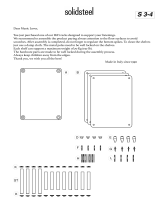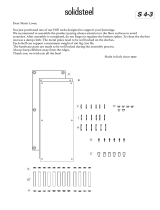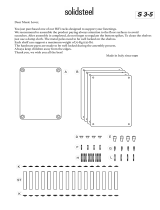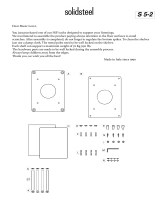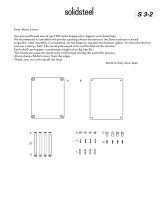5
SAFETY PRECAUTIONS
• Use this appliance only for its intended use
as described in this manual.
• Be sure your appliance is properly installed
and grounded by a qualified technician in
accordance with the provided installation
instructions.
• Do not attempt to repair or replace any
part of your range unless it is specifically
recommended in this manual. All other
servicing should be referred to a qualified
technician.
• Before performing any service,
DISCONNECT THE RANGE POWER
SUPPLY AT THE HOUSEHOLD
DISTRIBUTION PANEL BY REMOVING
THE FUSE OR SWITCHING OFF THE
CIRCUIT BREAKER.
• Do not leave children alone—children should
not be left alone or unattended in an area
where an appliance is in use. They should
never be allowed to sit or stand on any part
of the appliance.
• Do not allow anyone to climb, stand or hang
on the door, kick panel, drip tray handles,
or cooktop. They could damage the range
and even tip it over, causing severe personal
injury.
• Do not store flammable materials in the oven
or near the cooktop.
• Do not store plastic, flammable liquids or
combustible materials on top of the optional
high shelf.
• CAUTION: ITEMS OF INTEREST TO
CHILDREN SHOULD NOT BE STORED IN
CABINETS ABOVE A RANGE OR ON THE
BACKSPLASH OF A RANGE—CHILDREN
CLIMBING ON THE RANGE TO REACH
ITEMS COULD BE SERIOUSLY INJURED.
• For your safety, never use your appliance for
warming or heating the room.
• Never wear loose-fitting or hanging garments
while using the appliance. Be careful when
reaching for items stored over the range.
Flammable material could be ignited if
brought in contact with surface burners,
burner grates or oven heating elements
and may cause severe burns.
• Use only dry pot holders—moist or damp pot
holders on hot surfaces may result in burns
from steam. Do not let pot holders touch
surface burners, burner grates or oven
heating elements. Do not use a towel or
other bulky cloth.
• When surface cooking, do not touch the
surface burners, burner grates, grille or
griddle (on some models) or the surrounding
areas.
When using the oven, do not touch the oven
heating elements, the interior surface of the
oven or the exterior area immediately
surrounding the door or back trim.
These surfaces may be hot enough to burn.
During and after use, do not touch, or let
clothing or other flammable materials
contact, the surface burners, grille or griddle
(on some models), areas near the surface
burners, or any interior area of the oven;
allow sufficient time for cooling first.
Potentially hot surfaces include the cooktop,
areas facing the cooktop, oven vent opening,
surfaces near the opening, crevices around
the oven door, the drip tray handles directly
above the oven door, metal trim parts
above the door, or any backguard or high
shelf surface.
The drip trays get hot when the oven is on.
Do not remove the drip trays until they are
cool.
CAUTION: The inside surface of the oven
may be hot when the door is opened.
• Keep the ventilator hood and grease filters
clean to maintain good venting and to avoid
grease fires. Turn the ventilator OFF in case
of fire or when intentionally “flaming” liquor
or other spirits on the cooktop. The blower,
if in operation, could spread the flames.
• DO NOT obstruct the flow of combustion or
ventilation air to the appliance. Be sure a
fresh air supply is available.
• Cook meat and poultry thoroughly—meat
to at least an INTERNAL temperature of
160°F. and poultry to at least an INTERNAL
temperature of 180°F. Cooking to these
temperatures usually protects against
foodborne illness.




















